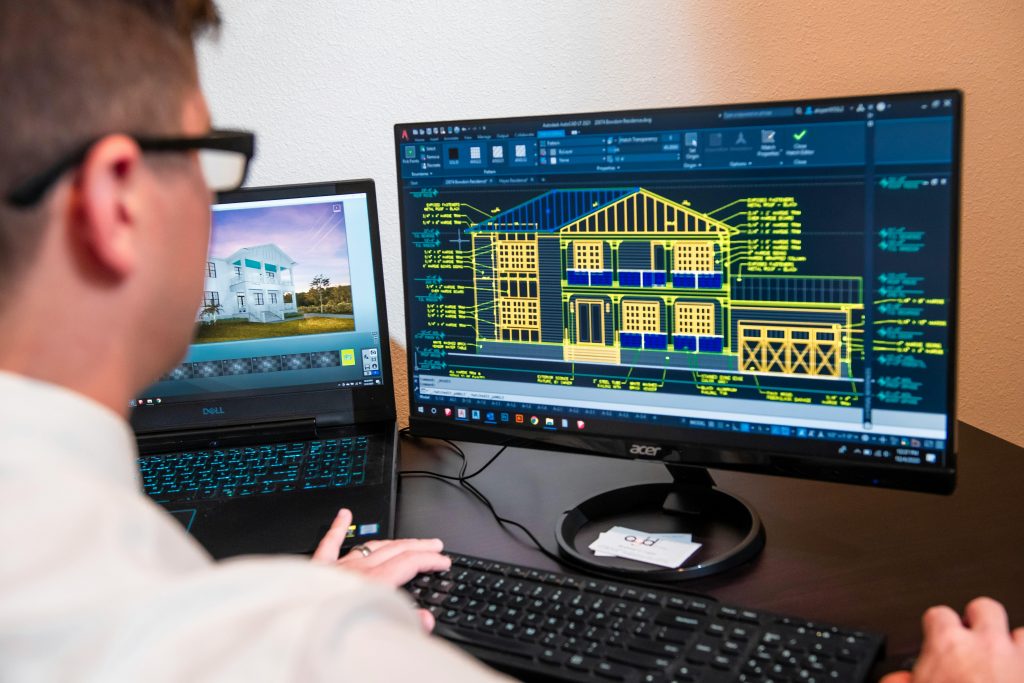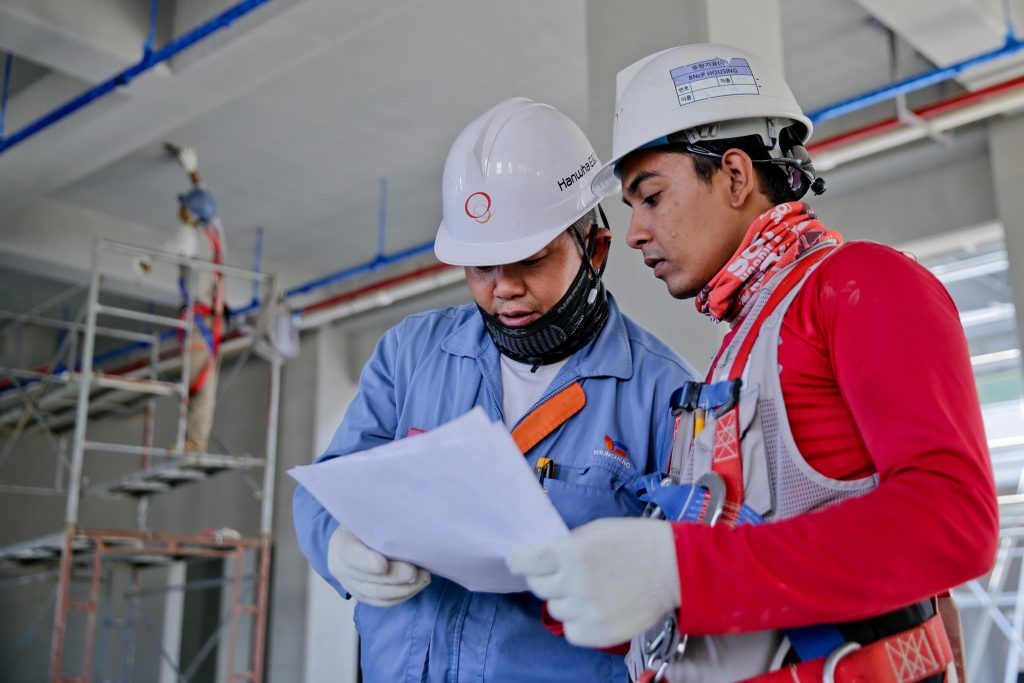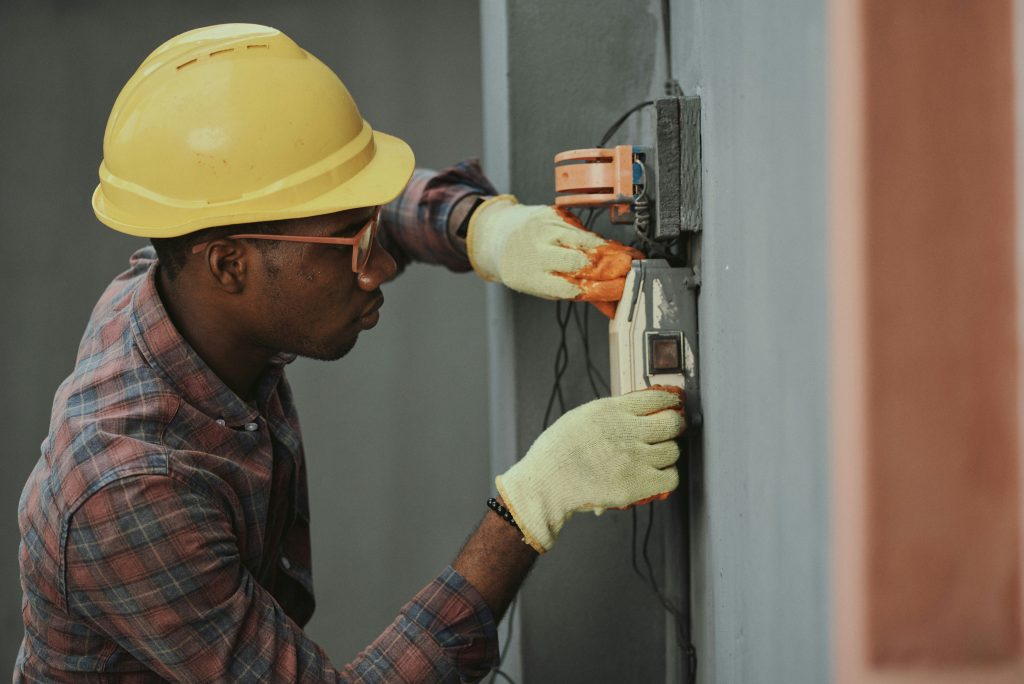安东尼奥-西尔维斯特雷
4 月 28, 2025 • 13 min read

全球建筑业、 估计占全球经济的 $10 亿美元从历史上看,美国的生产力一直比较落后。然而,ResearchDive 的数据显示
人工智能为缩小生产力差距提供了可能 混凝土 #1.(报告是 这里.)
全世界的政策都在鼓励采用人工智能。例如 美国总统唐纳德-特朗普分别于 2019 年和 2025 年 1 月签署行政命令这些行政命令表面上是为了优先考虑美国在人工智能领域的领导地位。这些行政命令表明,美国自上而下地支持人工智能融入建筑等行业。
下面,我们将探讨人工智能和自动化为建筑业 BIM 带来变革的五种强大方式,以及每个领域的实际应用和业务影响。
人工智能在 BIM 中最具变革性的应用之一是 生成设计在人工智能技术中,算法可以根据指定目标快速生成和评估数百种设计方案。建筑师可以让人工智能根据空间使用、能效、成本甚至美学等因素提出无数优化布局建议,而不是手动起草一两个方案。例如 Autodesk’s Project Discover 用于设计其多伦多办事处,通过处理员工偏好(如日照和相邻关系)生成平面图,为 60,000 平方英尺的工作空间创建最佳布局 archistar #1 archistar #2..与 BIM 集成的生成设计工具使团队能够
对业务的影响很大: 更快的设计审批、更少的变更单以及更创新、更受客户欢迎的设计.通过在设计阶段采用人工智能,商业开发商可以优化办公楼或商场的布局,以获得最大的可出租空间并节约能源;住宅建筑商可以根据客户的要求快速配置住宅小区;可再生能源规划师可以自动定位太阳能电池板或风力涡轮机,以达到最高效率。人工智能驱动的 BIM 设计可在更短的时间内交付与气候兼容、成本效益高且错误更少的建筑 混凝土链接.
延误和成本超支困扰着建筑项目,但 机器学习 正在帮助项目团队提前应对这些挑战。通过分析 BIM 数据和历史项目记录,人工智能可以预测潜在的进度延误、预算问题或风险 之前 升级。这种预测能力将 BIM 从静态三维模型转变为动态、智能驱动的项目仪表板。
人工智能驱动的规划工具 可自动生成和调整施工进度计划。研究人员已经展示了以下 ML 系统 直接从 BIM 模型生成施工进度计划 by learning from past projects mdpi.com.在实地,解决方案包括 Oracle’s Construction Intelligence Cloud continuously monitor project data to flag likely delays and suggest corrective actions 甲骨文 #1.
Similarly, ALICE Technologies’ AI platform can re-sequence tasks on the fly – if a delivery is late or a crew falls behind, the software proposes new schedules and resource allocations to keep the project on track blog.alicetechnologies #1.这种 4D BIM(三维+时间) simulation allows teams to test “what-if” scenarios in advance blog.alicetechnologies #1找到最有效的施工路径。
人工智能驱动规划的主要优势包括
在 BIM 中利用预测分析、 商业承包商 可以按时按预算交付复杂的建筑(机场、医院等)、 住宅开发商 可以预测供应链中的小插曲(如木材价格飙升)并调整采购,以及 可再生能源项目 尽管存在天气和许可方面的不确定性,但仍可简化风能和太阳能发电场的建设。
在全球范围内,提高建筑效率可带来巨大的经济效益--麦肯锡估计,缩小建筑业生产率差距可增加 每年为世界经济带来 $1.6 万亿美元的收益 麦肯锡链接.人工智能驱动的 BIM 规划是抓住这一机遇的关键部分。
On the jobsite, AI isn’t just living in the computer – it’s controlling robots and automated machines that execute construction tasks with speed and precision. When tied into BIM models, these 建筑机器人 可以完全按照规格要求完成劳动密集型工作,彻底改变了建筑结构的建造方式。建筑自动化包括机械臂、3D 打印机、自动驾驶汽车和无人机,所有这些都是根据数字图纸工作。
一个最好的例子是使用 用于重复性工作的机器人技术 如钢筋绑扎和布局。TyBOT 机器人(来自 Advanced Construction Robotics 公司)可以自动绑扎桥面上的钢筋交叉点,速度超过 每小时 1 100 条领带 canada.constructconnect link – far faster than human workers and without fatigue. Its companion, IronBOT, lifts and places heavy rebar bars in position, doing the grunt work so humans don’t have to canada.constructconnect link one canada.constructconnect 链接二.
这些机器人一起读取 BIM 设计中的钢筋布局,并自主进行安装。使用 TyBOT 的承包商大大节省了时间,并减少了工人的肌肉骨骼损伤(因为人工绑扎钢筋是一项体力劳动)。
BIM 驱动的自动化在现实世界中的其他应用包括
对于企业领导者来说,自动化具有双重价值: 更高的生产率和更好的安全性.机器人可以全天候工作并处理危险任务,从而缩短项目时间并减少事故。一项案例研究发现,在现场应用机器人和人工智能可实现 项目完成速度提高 20%,工伤事故减少 25% blog.lidarnews 链接 blog.lidarnews 另一个.
在商业建筑领域,这意味着提前开业并为设施创造收入;在住宅建筑领域,它可以通过加快生产速度来帮助缓解住房积压问题;在大型可再生能源农场,尽管劳动力有限,但自动化有助于实现积极的部署目标(如安装数千块电池板)。虽然机器人技术的前期投资较高,但在节省劳动力、降低风险和一致性方面的投资回报率却非常可观。在 BIM 和人工智能的指导下,自动化正在将建筑施工变成一个更加高效的过程。 类似制造过程在这种情况下,结果可预测,变异性较低。
建筑工地本身就存在风险,但当人工智能与 BIM 相结合时,可显著改善安全监督和风险管理。传统上,安全合规性--从检查工人是否佩戴安全带到发现火灾隐患--都依赖于人工监管人员。现在,通过人工智能分析的计算机视觉和传感器数据可提供 全天候警惕监控 这是人类无法比拟的。
人工智能系统可以观看现场摄像机的实时视频,并自动检测不安全的情况。例如 图像识别算法 如果 BIM 建模站点上的工人没有穿戴必要的防护装备,或者有人进入了禁区,系统就会发出警报。这些警报可以让管理人员立即进行干预。
其中一种方法是,无人机在工地上巡逻,人工智能检查其拍摄的画面,以识别危险,如未覆盖的孔洞或结构不稳定的迹象,然后在 BIM 上精确定位,以便采取快速行动。 blog.richardvanhooijdonk link.这种实时感知水平有助于减少严重事故。在这个全球工地死亡率最高的行业中,这种人工智能驱动的监督改变了游戏规则 混凝土链接.
考虑一下人工智能提升建筑安全的一些具体方法:
人工智能增强安全对企业的影响不仅仅是减少伤害(这是人类的需要),而且还能带来经济效益。更安全的场所意味着 降低保险费,减少停机时间,提高员工士气.合规和报告的自动化节省了管理人员的时间,降低了受到监管处罚的几率。例如,一家大型承包商在采用计算机视觉人工智能安全系统后,报告现场违反安全规定的情况减少了 38%。 混凝土链接 下一个链接.
在可再生能源建设中(如分布在广阔区域的风电场),人工智能无人机可以比人类检查员更快地覆盖地面,确保工地偏远地区的安全,并按照规范施工。最终,将人工智能与 BIM 安全技术相结合,可将风险管理从被动过程转变为主动预测过程,从而保护工人和项目的财务健康。
可持续发展日益成为建筑业的首要任务,而人工智能增强型 BIM 正帮助建筑师和建筑商做出更环保、更明智的决策。通过分析复杂的数据集(从能源模型到供应链),人工智能可以优化设计和施工流程,从而实现最小的环境影响和最高的效率。这在以下领域尤为重要 可再生能源建设在这种情况下,太阳能发电场和风力发电场等项目必须同时兼顾经济和生态效益。
人工智能的一种贡献方式是改进 materials and energy efficiency in designs. Machine learning can crunch data on building energy performance to suggest modifications in a BIM model that reduce operating costs. For instance, AI can recommend the optimal placement of windows, shading, and HVAC systems in a commercial building model to cut energy usage, or propose alternative materials that lower the project’s carbon footprint.
In the United States, a startup called Concrete.ai applies AI to create high-performance concrete mixes tailored to each project’s needs. By sifting through hundreds of thousands of formulations, the AI finds a blend that meets strength requirements while using less cement (which in turn cuts carbon emissions) 混凝土链接. One client was able to significantly reduce their carbon footprint by using an AI-designed low-carbon concrete mix without sacrificing performance 混凝土链接. This illustrates how AI and BIM data (in this case, structural requirements from the BIM) combine to drive sustainable outcomes.
In the context of renewable energy projects, AI is proving invaluable as well:



Importantly, supportive government policies are accelerating the sustainability drive. Incentives for energy-efficient buildings and clean energy (such as tax credits or standards) align with what AI in BIM delivers – data-driven efficiency. Even trade policies can indirectly push firms towards innovation; for instance, tariffs on construction materials (like the U.S. steel tariffs under Trump that raised steel prices ~14% constructiondive link) make waste reduction and alternative materials more attractive.
AI helps companies adapt to these external pressures by optimizing designs to use less of expensive inputs and source materials smarter. In short, AI and automation in BIM not only make construction faster and cheaper, but also greener and more adaptive to the global push for sustainability.
AI and automation are no longer experimental in the construction industry – they are practical tools delivering real ROI today. From the earliest design sketches to long-term facility management, AI-enhanced BIM is enabling smarter decisions at every step. Commercial developers are using generative design to create more profitable and occupant-friendly buildings. Residential builders leverage machine learning to prevent delays and cost overruns in housing developments.
Renewable energy firms deploy AI-driven planning and robots to accelerate solar and wind installations critical to our energy future. These transformations are happening against a backdrop of global economic headwinds and opportunities: labor shortages, high material costs, sustainability mandates, and the promise of AI contributing trillions to GDP. Forward-looking firms that invest in AI for BIM now are positioning themselves to lead in productivity and innovation, while laggards risk being left behind in a rapidly digitizing market.
Business leaders should take away that AI in construction is not about replacing humans, but augmenting teams to build better. As one construction tech CEO noted, the goal is a balanced human-machine collaboration, not a dystopian fully automated site 混凝土链接 second concrete.ai link.
People will always be central to construction, but empowered by AI, they can focus on higher-level problem solving while machines and software handle the grunt work and data crunching. We’ve highlighted five powerful ways AI and automation are revolutionizing BIM: generative design, predictive planning, robotic construction, safety management, and sustainability optimization. Each of these offers compelling benefits – faster project delivery, cost savings, safer sites, and greener outcomes – that directly impact the bottom line and competitive advantage.
In the coming years, expect AI’s role in BIM to grow even more. Generative design will become standard practice, perhaps even designing entire smart cities virtually. Digital twins powered by AI will manage buildings autonomously, adjusting lighting, climate, and maintenance in real-time. And on site, construction robots will work hand-in-hand with crews, guided by AI insights from BIM models.
The companies that embrace these technologies stand to gain immensely in efficiency and capability. As the global construction landscape evolves with economic shifts and policy changes, one constant is clear: AI is set to be a cornerstone of construction’s future, driving innovation in how we build and what we can achieve. Now is the time for industry leaders to understand these trends and invest in bringing AI into their BIM workflows – the foundations you lay today will define your success in the new era of construction.
We've worked in the construction industry. Check out our website to find out more about what we do.
安东尼奥-西尔维斯特雷